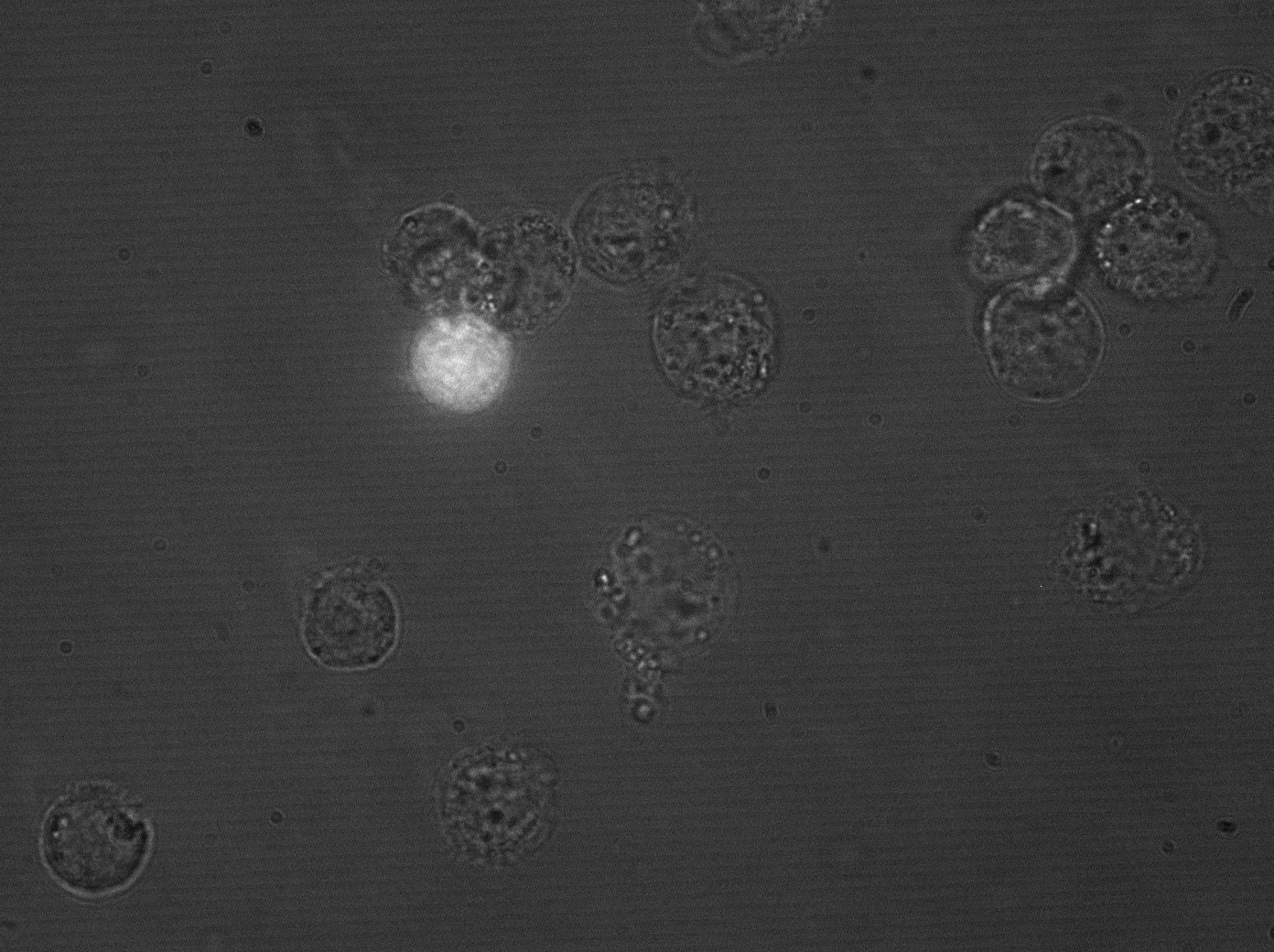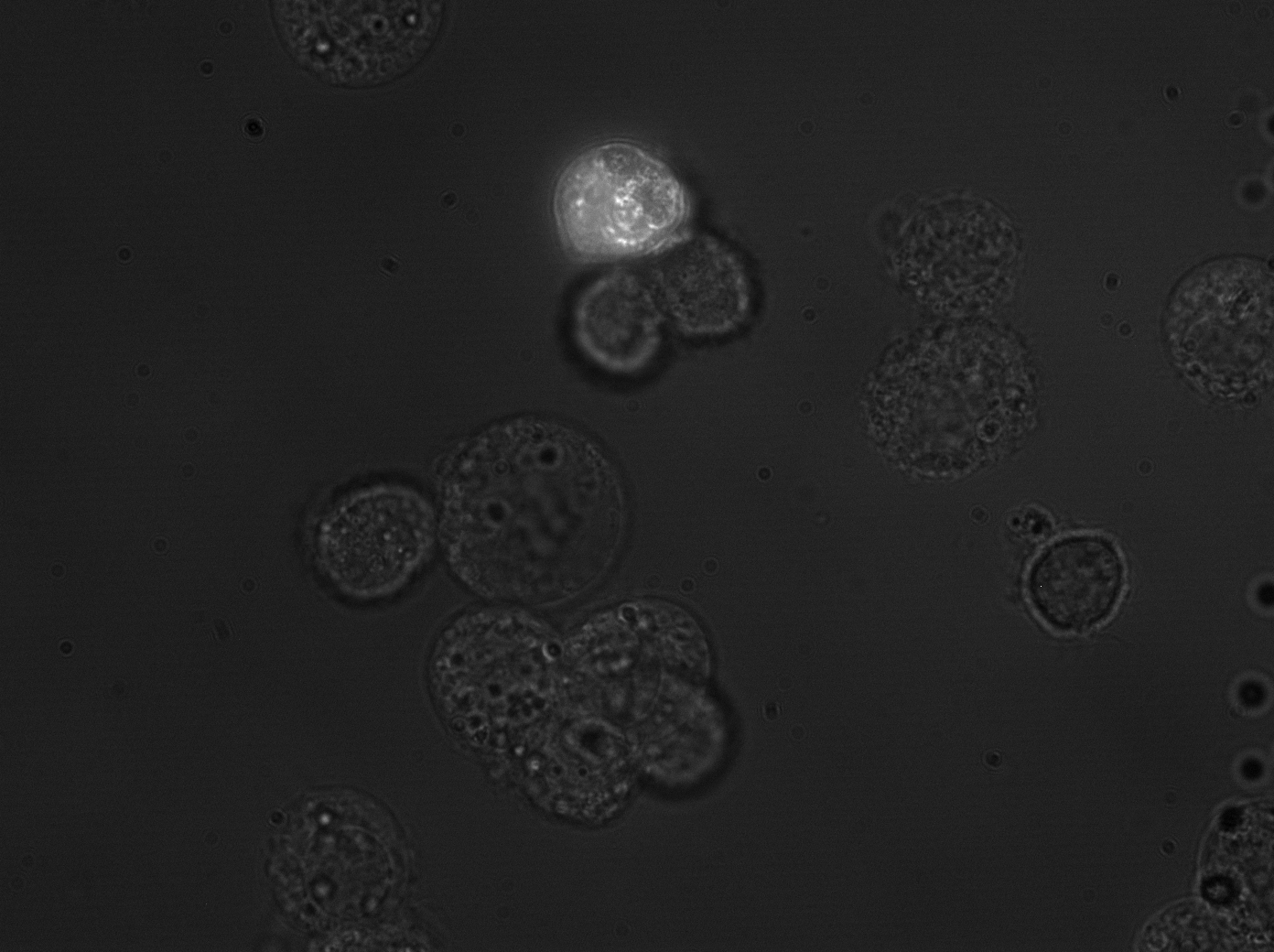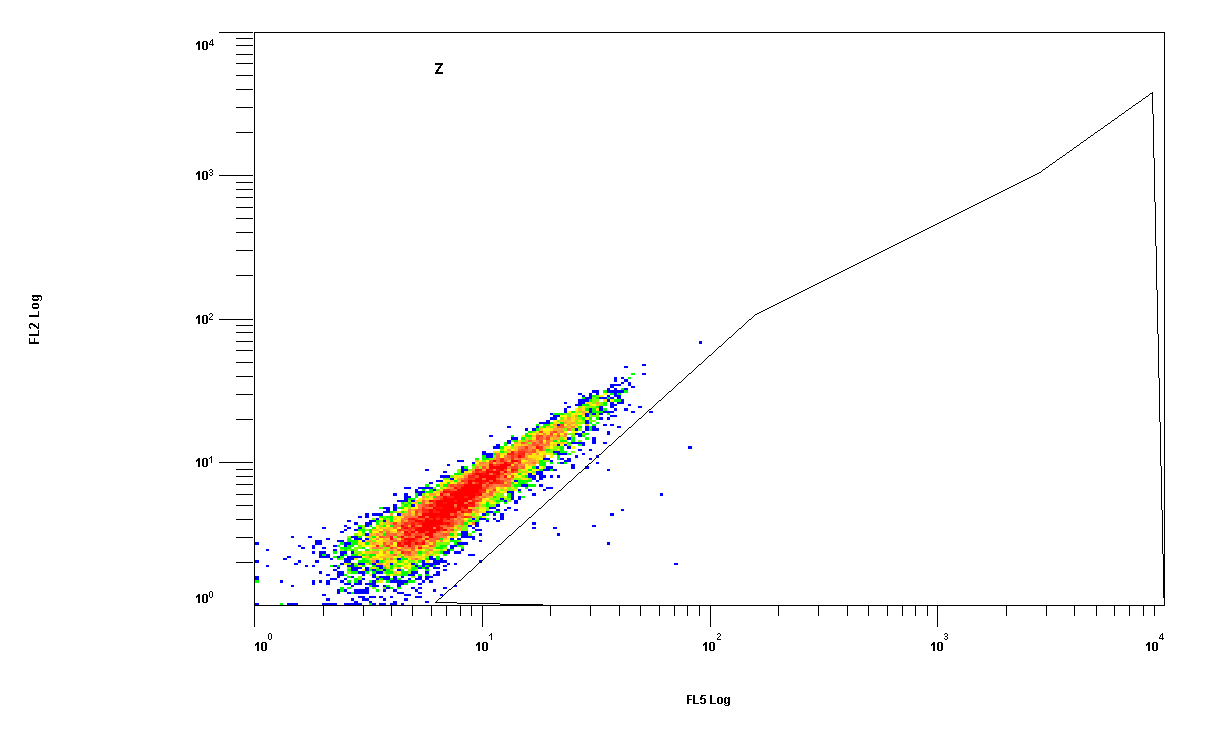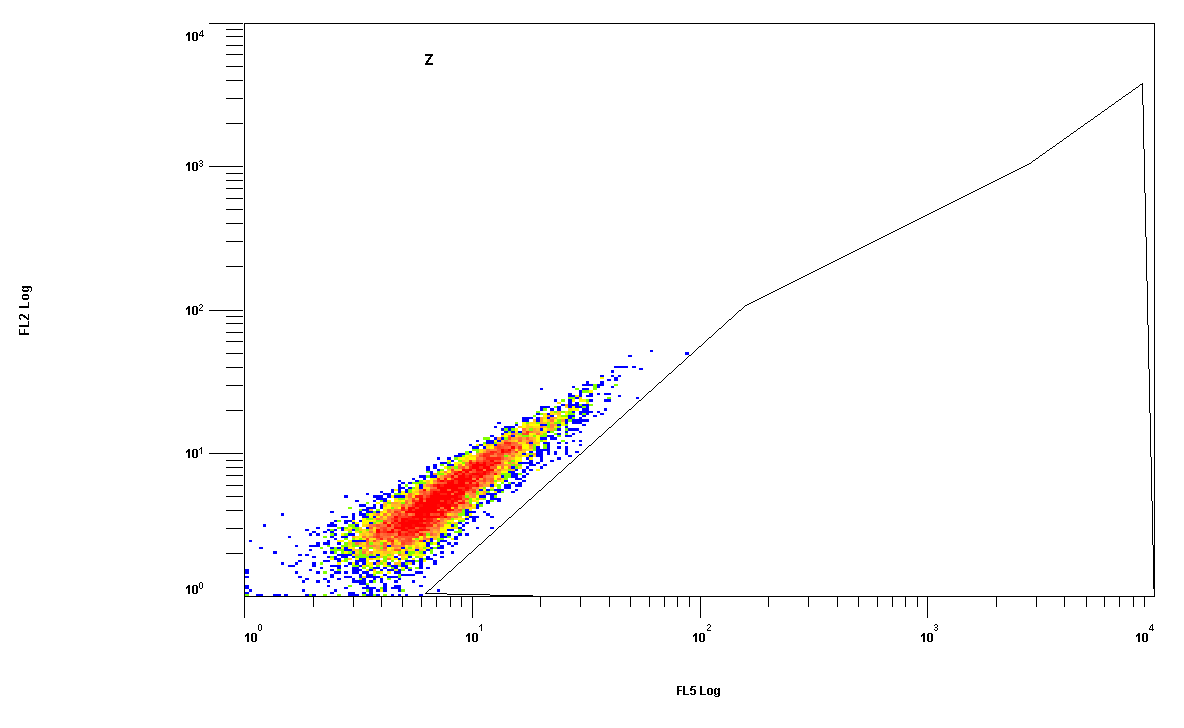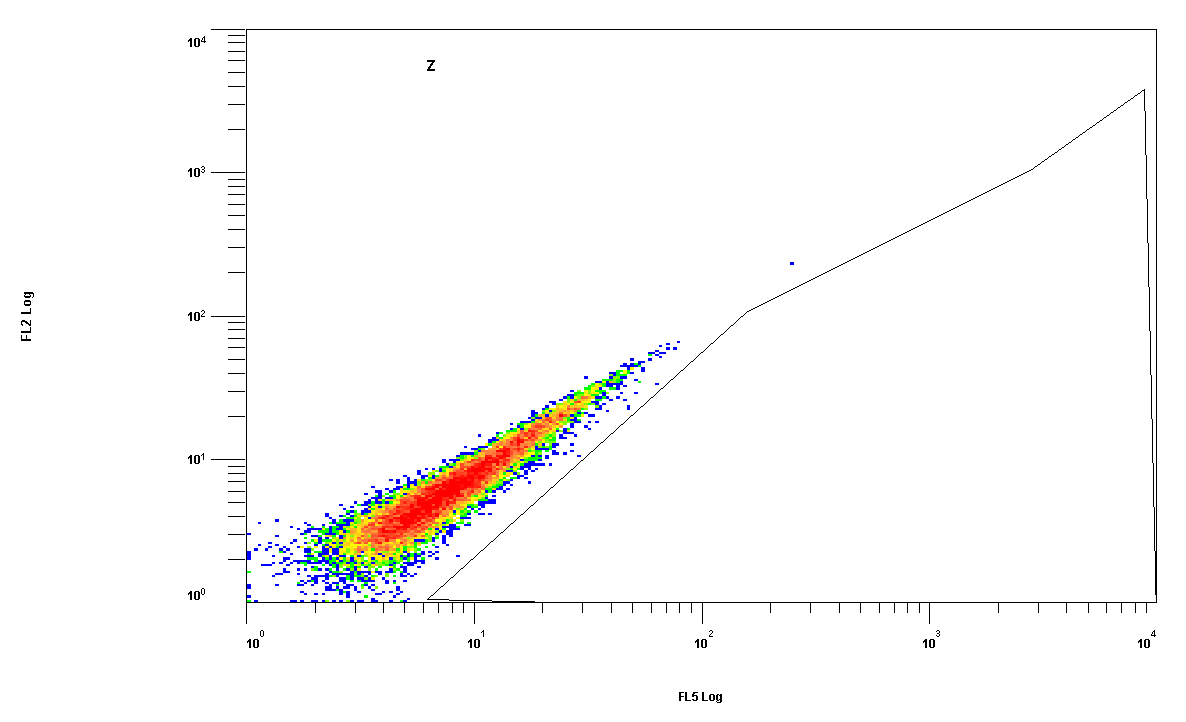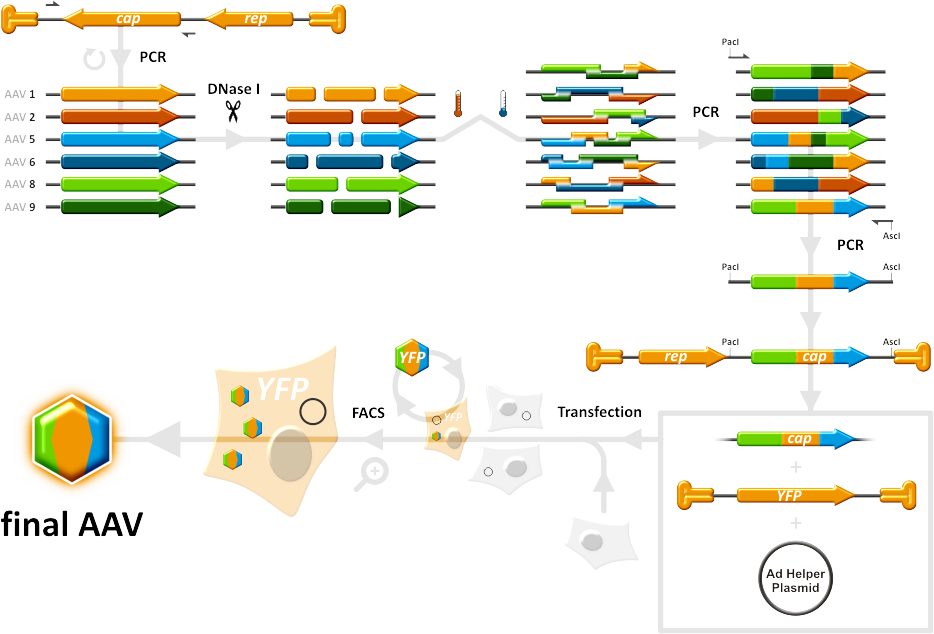Team:Heidelberg/Project/Capsid Shuffling/Homology Based
From 2010.igem.org
Philippbayer (Talk | contribs) (→Results) |
Philippbayer (Talk | contribs) |
||
| Line 14: | Line 14: | ||
Three selection rounds were carried out on Huh-7 cells, the viral DNA was isolated for each selection round and cloned into a Wilson AAV8 wild-type vector. 12 clones from each selection round were picked, and viruses that contain a YFP construct were produced and used to infect 96-well plates of mouse primary hepatocytes, HeLa and Huh-7 cells. We already have some results for shuffled and selected AAV but they dont represent the whole variety of clones that are still breading inside the inczbator and will be tested with facs analysis this week. | Three selection rounds were carried out on Huh-7 cells, the viral DNA was isolated for each selection round and cloned into a Wilson AAV8 wild-type vector. 12 clones from each selection round were picked, and viruses that contain a YFP construct were produced and used to infect 96-well plates of mouse primary hepatocytes, HeLa and Huh-7 cells. We already have some results for shuffled and selected AAV but they dont represent the whole variety of clones that are still breading inside the inczbator and will be tested with facs analysis this week. | ||
| - | [[Image:huh_clones.gif| | + | [[Image:huh_clones.gif|600px]] |
| - | [[Image:hela_clones.gif| | + | [[Image:hela_clones.gif|600px]] |
| - | [[Image:PH_clones.gif| | + | [[Image:PH_clones.gif|600px]] |
'''Selection in Mouse Primary Hepatocytes:''' | '''Selection in Mouse Primary Hepatocytes:''' | ||
| Line 26: | Line 26: | ||
In parallel, we picked 48 randomly selected clones from the AAV library, packaged them with a YFP construct and tested them using flow cytometry on HepG2, Huh-7 and mouse primary hepatocytes. One clone of those was able to infect both HepG2 and Huh-7 cells, and was thus packaged with a luciferase construct and injected into mice. [https://2010.igem.org/Team:Heidelberg/Project/Mouse_Infection Mice experiment] showed a specific targeting into the liver. | In parallel, we picked 48 randomly selected clones from the AAV library, packaged them with a YFP construct and tested them using flow cytometry on HepG2, Huh-7 and mouse primary hepatocytes. One clone of those was able to infect both HepG2 and Huh-7 cells, and was thus packaged with a luciferase construct and injected into mice. [https://2010.igem.org/Team:Heidelberg/Project/Mouse_Infection Mice experiment] showed a specific targeting into the liver. | ||
| - | [[Image: | + | [[Image:hepg2_transyfp_2.gif|350px]] |
| - | [[Image: | + | [[Image:huh7_transyfp1_2.gif|350px]] |
| - | [[Image:facs_43_huh.gif| | + | [[Image:facs_43_huh.gif|600px]] |
| - | [[Image:facs_nc_huh7.gif| | + | [[Image:facs_nc_huh7.gif|600px]] |
| - | [[Image:facs_nc_hepg2.gif]] | + | [[Image:facs_nc_hepg2.gif|600px]] |
{{:Team:Heidelberg/Pagemiddle}} | {{:Team:Heidelberg/Pagemiddle}} | ||
[[Image:HomBasShuffling 934px.png|270px]] | [[Image:HomBasShuffling 934px.png|270px]] | ||
{{:Team:Heidelberg/Bottom}} | {{:Team:Heidelberg/Bottom}} | ||
Revision as of 03:15, 28 October 2010

|
|
||
 "
"



